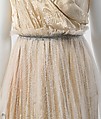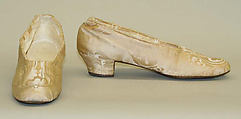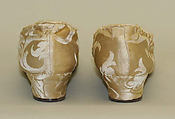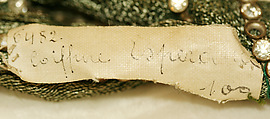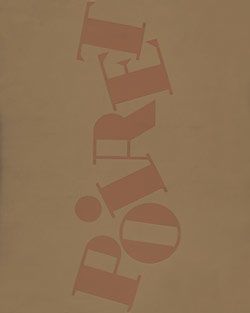"Théâtre des Champs-Élysées"
Designer Paul Poiret French
Not on view
Poiret's radical approach to dressmaking was inseparable from his ideas of the body, which found their ultimate expression in his advocacy of an uncorseted figure. While Poiret was not the only designer to promote an integrated and intelligible corporeality, he was among the first to link it to the naturalism of Greco-Roman dress.
The first display of a classical sensibility appeared in Poiret's fashions of 1906, the year that he abandoned the corset. However, as seen in his "1811" dress, which reflects the proportions and cylindrical silhouette of the Directoire, it was classicism through the lens of the late eighteenth century. The same allusive rather than academic classicism is manifested in Poiret's "Théâtre des Champs-Élysées" evening dress, which was worn by Denise Poiret to the premiere of Igor Stravinsky's Sacre du Printemps, marking the opening of the Théâtre des Champs-Élysées on April 1, 1913.
Denise Poiret's slender figure was the perfect canvas for Poiret's classicizing tendencies. Unlike the odalisques of the Belle Époque, her svelte, gamine beauty adhered to the more active body type that was emerging in the early twentieth century. Among the dresses of more explicit classical allusion that Poiret made for his wife was a series of provocative baby-doll-length nightdresses. With their one-shouldered necklines, they cite the bareness of the Amazon, who would allow one shoulder of her tunic to fall open, exposing her breast. These "classical" negligées also recall the costume Denise wore to Poiret's classically inspired party "Les Festes de Bacchus," held on June 20, 1912. Made from a fabric by Mariano Fortuny, a designer whom Poiret promoted in his maison de couture, Denise Poiret, in the role of Juno, queen of the gods, represented both the ideal of classical beauty and the paradigm of the modern woman.
Due to rights restrictions, this image cannot be enlarged, viewed at full screen, or downloaded.
This artwork is meant to be viewed from right to left. Scroll left to view more.







